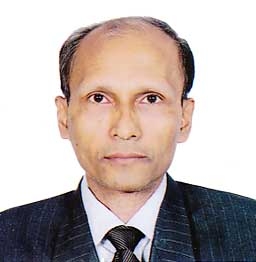
Masum Billah :
New textbooks for grades six and seven have been developed in light of the new curriculum going to be implemented from January 2023. The role of teachers will be of serious importance and the assessment will see fifty percent in the form of formative and the rest summative that again talks about the greater role of teachers. In the new curriculum there will be ten subjects including four religious subjects.
However, in the current practice different subjects are not taught by the teachers according to their deep subject knowledge that is usually determined by the subjects they studied in the graduation of master’s level. That means mathematics teachers should have studied mathematics in the graduation or master’s level. What happens in the current practice is that the teachers of agricultural science teach mathematics and the history or economics teachers teach English. This is a reality and nobody can be held solely responsible for that. But the new curriculum demands subject wise teachers as without subject specific teachers and proper training, it would be next to impossible to conduct classes by the teachers of other subjects. The DSHE has already sent a guideline to the head teachers how teachers should be distributed as per the new subject allocation.
Due to some practical reasons we don’t have subject wise teachers to teach different subjects in the secondary level. In the new curriculum this trend is going to be changed. Extra teachers in one subject or teachers teaching no subject will be allowed in the new curriculum. After December 31 distribution of subjects among the teachers will not happen in this way. Guidance has already been sent to the head teachers how to coordinate and manage these affairs. Suppose arts and crafts teachers are usually not available in secondary schools particularly in non-government schools. In that case, teachers having some experience in this line may be given responsibility to teach this subject. Head teachers are given time and guidance to do it by September 10 that has farther been extended. If there are ten teachers in a school, ten subjects will be distributed among them as per the new curriculum. If it happens that there are more than one teacher in a particular subject and there is no teacher at all in a subject will have to be reorganized. If the number of teachers exceeds ten, in that case as per matching list ten subjects will be allocated among ten teachers.
In the new curriculum, the teacher who is currently teaching Bengali will be considered as Bengali teacher , English teacher English, mathematics teacher mathematics, physical science and life science teacher will be treated as science teacher, social science and geography teacher will teach history social science, physical and ICT trained teacher will be treated as ICT teacher, agriculture, business and physical teacher will be health safety teacher, religion and moral teacher will teach religion and arts and crafts teacher will teach art and culture. Hence, to get classes in these subjects being the teachers of other subjects needs to win the good books of the authorities concerned. In the new curriculum things will be reshuffled and only the subject based teachers will have to conduct classes. We do appreciate this concern and step. However, the practical phenomenon will stand as a great barrier to implement this wise and honest decision.
Newspapers have flashed the news that Barguna Government Girls High School accommodates 49 teaching staff where only 20 teachers are available keeping 29 positions vacant. And in Government Boys’ School of Barguan 31 teachers are working. Pirojpur government Girls’ School sees only 32 teachers against 49 positions. In Bhola Government School 29 teachers work against 49 teachers’ post. If we look at Sandip Upazila’s Kargil Government Pilot High School only 4 teachers work there though 15 positions are lying here. At Moheshkhali only 4 teachers are teaching though 10 positions are here. It clearly shows that the academic activities go in the most neglected way in the rural government secondary schools. Then we can easily imagine how miserable situation lies in non-government schools. Teachers find it really difficult just to follow the routine let alone make learning interesting and fruitful. Bhuban Joy Government High School of Juraichari Upazilla under Rangamati district, only seven teachers are working here against 25 teachers. Taipangpara government high school of Rajsthali Upazila under the same district out of nine positions only four teachers are working.
However, Dhaka city sees 38 government secondary schools that witness 219 additional teachers. Only in the social science subject there are 99 additional teachers. Total position in 38 schools is one thousand 580 teachers; out of them 790 are assistant teachers and 790 senior teachers. Now they see 219 more teachers. 87 percent senior teachers are extra in the secondary schools of the capital city, the rest are assistant teachers. This picture, I mean, shortage of teachers and extra teachers really tend to haphazard the smooth functioning of secondary level teaching learning activities and students are the worst suffers of it. Sooner it is redressed, the better.
(The writer is President, English Teachers’ Association of Bangladesh).

